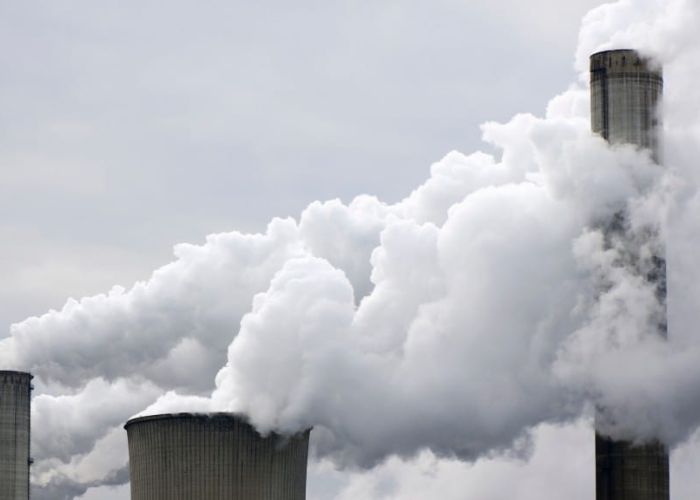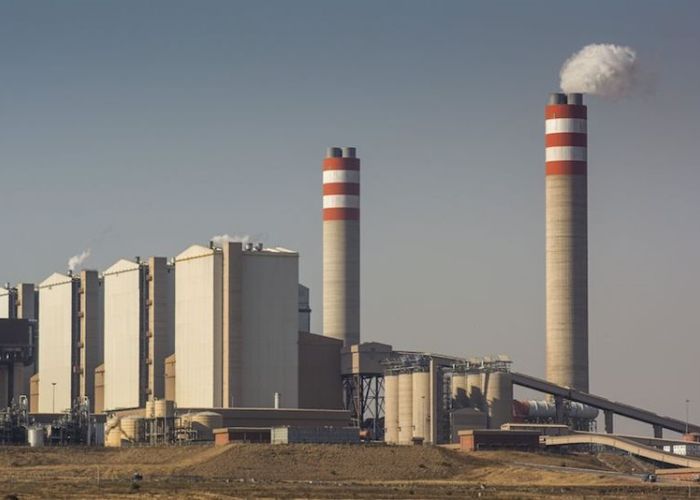Throughout my seven years as a journalist covering energy in South Africa, I’ve had the honor of touring numerous power stations. The remarkable Kusile Power Station is one such example; it is the first new coal-fired power station to be constructed in South Africa in more than 20 years. Let’s read below about “Kusile Power Station – South Africa’s Modern Coal Power Updates”.
Kusile, a cutting-edge supercritical coal power station in South Africa’s Nkangala area, is evidence of the country’s persistent commitment to cutting-edge coal technology. The Kusile coal plant, when completed, will rank among the world’s largest with an expected capacity of 4,800 megawatts.
The state-of-the-art environmental controls and efficiency upgrades were on full display during my recent tour of the factory. Some of the most important things I learned while touring this coal power giant are:
Kusile Power Station – South Africa’s Modern Coal Power Updates
Advanced Emissions Reduction Technology
The utilization of modern emissions control technologies, such as flue-gas desulfurization (FGD) for sulfur dioxide removal and selective catalytic reduction (SCR) for nitrogen oxide reduction, was one feature that left an impression on me with Kusile. These technological advancements lessen the plant’s negative effect on the environment and guarantee that it complies with the stringent air quality standards set by South Africa.
The management team of the Kusile facility claims that the SCR technology can cut nitrogen oxide emissions by as much as 80% and that the FGD system can eliminate more than 90% of sulfur dioxide emissions. Compared to South Africa’s older coal plants, which do not have modern pollution controls, this is a huge improvement. Kusile revolutionizes the way coal power is done in the country.
Supercritical Boiler Design
The state-of-the-art supercritical boiler design by Kusile is another notable feature. With supercritical operation, the plant may run at extraordinarily high pressures and temperatures, which greatly enhances the steam cycle’s thermal efficiency. More power is produced for every metric ton of coal that is used because of this.
To manage the extreme supercritical steam conditions, Kusile’s boiler design makes use of state-of-the-art materials and engineering. According to the plant engineers, Kusile’s efficiency might reach 39%, which is quite remarkable for a coal power station. Reduced coal consumption while increasing electrical output is a huge win for the environment.
Phased Construction Approach
By launching units in stages, Kusile has adopted a modular building strategy. As a result, succeeding units can keep working while electricity is gradually added to the grid. Building began in 2008, and the first unit, Unit 1, was synchronized to the grid in 2017. The second unit, Unit 2, was synchronized in 2019. There are many levels of completion for units 3-6.
Read More:- Siemens J-Class Gas Turbines – Irsching 4 Power Plant in Germany
Unit 5, where the installation of the large boiler and turbine was almost finished, was open for my tour. Projects of this tremendous magnitude are best managed using a staged approach. The station is steadily making strides toward reaching full capacity, which is no small feat for multi-billion-rand assets like Kusile.

Investment in Local Communities
Additionally to supplying dependable baseload power, Kusile is a long-term investment that will help local communities. Eighty percent of the thousands of construction jobs produced by the project have been filled by South Africans. After the factory is finished, it will employ approximately 800 experienced personnel to run the facility.
Read More:- Gansu Wind Farm – China’s Biggest Wind Energy Project Updates
Small and medium-sized businesses are mentored by the Kusile Supplier Development Program, which is one of the project’s community growth efforts. More than R5.5 billion has been put into the development of contractors by Kusile. Opportunities in the Mpumalanga province economy are being propelled by the station.
Commitment to Renewables
Kusile demonstrates that coal will remain a significant component of South Africa’s energy mix, but the company’s owners are also making substantial investments in renewable energy. In an effort to diversify its electricity sources, Eskom is increasing its large-scale solar and wind projects. More than a thousand MW of additional wind and solar power was announced by Eskom this year.
According to power, Due to Kusile’s consistent baseload, renewable energy sources like wind and solar may be balanced out by coal. Affordable and sustainable electricity is provided by this technology-neutral strategy. Clean energy and modern coal can coexist, as Kusile shows.
Conclusion
Coal power will continue to play a crucial role in South Africa’s electrical future, as my visit to Kusile proved. Keeping money in cutting-edge coal technology is a smart move by Eskom. Efficiency, cost-effectiveness, and environmental performance are all redefined by Kusile.
As South Africa’s economy continues to expand and power demands continue to rise, Kusile will be there to provide affordable, dependable electricity. Coal, in conjunction with renewable energy expansion and stringent emissions regulations, may be a part of a sustainable energy system, as demonstrated by this project. Kusile demonstrates the usefulness of contemporary coal power, despite its frequent detractors. I hope you like reading “Kusile Power Station – South Africa’s Modern Coal Power Updates”.

Mohsen Ali is a Chemical Engineer with over a decade of experience in the energy sector. Specializing in power plant efficiency and sustainability, he brings expert insights to borderpowerplants.org. Mohsen holds a Master’s degree in Chemical Engineering and is dedicated to advancing sustainable energy solutions. Connect with him on Instagram or LinkedIn for more insights.
